Products
-
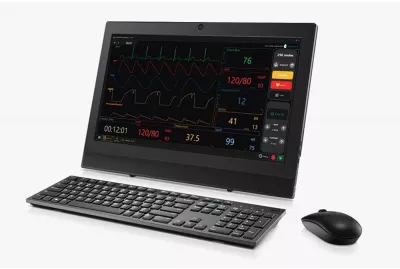 Gaumard Vitals™ Bedside Virtual Patient Monitor for Gaumard PatientsGaumard-Vitals-BedsideLearn More
Gaumard Vitals™ Bedside Virtual Patient Monitor for Gaumard PatientsGaumard-Vitals-BedsideLearn MoreThe Gaumard Vitals™ Bedside Patient Monitor offers participants the functionality and versatility of a bedside patient monitor. Participants can practice vital sign documentation and interpretation skills with Gaumard patient simulators and skills trainers in a simulated OR, ICU, or patient room. Compatible with both UNI® and OMNI® 2, the Bedside Patient Monitor helps you create immersive scenarios to enhance simulation-based learning.
-
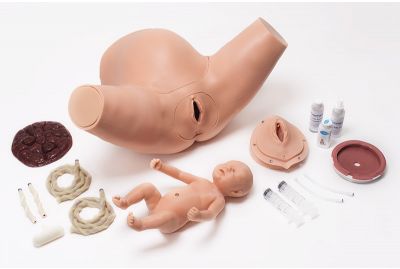 Super OB SUSIE® S500.300 - Childbirth Skills Trainer TorsoS500.300.PKLearn More
Super OB SUSIE® S500.300 - Childbirth Skills Trainer TorsoS500.300.PKLearn MoreThe Super OB SUSIE® childbirth training torso is designed to aid educators teach labor and delivery management skills to learners of all levels. The anatomically accurate pelvis and full-term neonate allows learners to develop clinical skills transferable to scenario-based exercises.
-
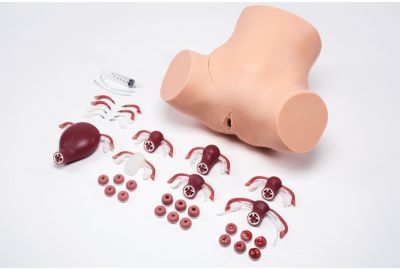 ZOE® S504.200 - Gynecological Skills TrainerS504.200.PKLearn MoreThe ZOE® S504.200 simulator is an adult-sized lower torso designed to help learners practice gynecologic skills. The simulator's realistic anatomy and collection of pathologies help learners work hands-on and develop the clinical skills needed to provide safe and effective care for a variety of gynecologic procedures.
ZOE® S504.200 - Gynecological Skills TrainerS504.200.PKLearn MoreThe ZOE® S504.200 simulator is an adult-sized lower torso designed to help learners practice gynecologic skills. The simulator's realistic anatomy and collection of pathologies help learners work hands-on and develop the clinical skills needed to provide safe and effective care for a variety of gynecologic procedures. -
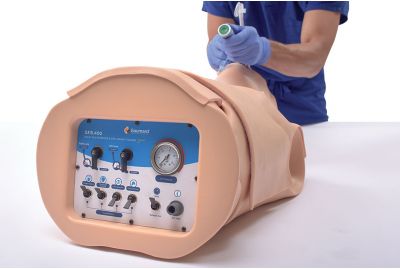 HAL® S315.400 - Adult Multipurpose Airway and CPR TrainerS315.400.M2.PKLearn MoreThe HAL® S315.400 advanced airway trainer allows learners to practice recognizing and managing a difficult airway via endotracheal intubation or surgical intervention, perform CPR, and treat tension pneumothorax. What’s more, all of HAL’s lifelike features operate without external power or batteries. Simply pressurize the internal reservoir using a standard BVM and it’s ready for use. HAL’s innovative features and green design make it a powerful trainer that’s easy-to-use, effective, and portable.
HAL® S315.400 - Adult Multipurpose Airway and CPR TrainerS315.400.M2.PKLearn MoreThe HAL® S315.400 advanced airway trainer allows learners to practice recognizing and managing a difficult airway via endotracheal intubation or surgical intervention, perform CPR, and treat tension pneumothorax. What’s more, all of HAL’s lifelike features operate without external power or batteries. Simply pressurize the internal reservoir using a standard BVM and it’s ready for use. HAL’s innovative features and green design make it a powerful trainer that’s easy-to-use, effective, and portable. -
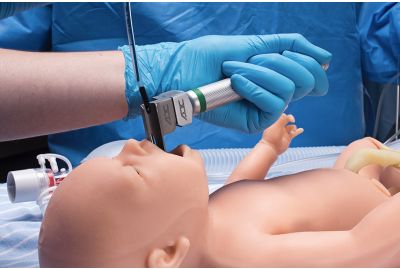 Newborn PEDI® S109 - Newborn Skills TrainerS109.PKLearn MoreThe Newborn PEDI® S109 is a full-body newborn patient simulator designed to help participants train and develop neonatal procedural skills. The S109's anatomically accurate anatomy allows participants to work hands-on and hone intubation, ventilation, compressions, IV cannulation, and umbilical catheterization skills.
Newborn PEDI® S109 - Newborn Skills TrainerS109.PKLearn MoreThe Newborn PEDI® S109 is a full-body newborn patient simulator designed to help participants train and develop neonatal procedural skills. The S109's anatomically accurate anatomy allows participants to work hands-on and hone intubation, ventilation, compressions, IV cannulation, and umbilical catheterization skills. -
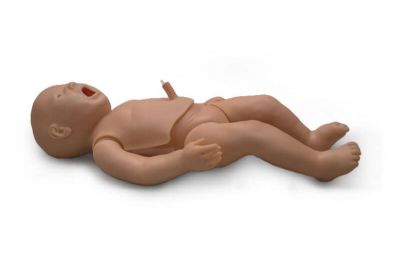 PEDI® Blue Newborn S320.200 - Newborn CPR Patient Simulator with SmartSkin™, Omni, IV arm, and IO leg.S320.200.PKLearn More
PEDI® Blue Newborn S320.200 - Newborn CPR Patient Simulator with SmartSkin™, Omni, IV arm, and IO leg.S320.200.PKLearn MoreThe PEDI® Blue Neonatal with SmartSkin™ with OMNI is specifically designed for neonatal resuscitation training. It features responsive cyanosis, real-time CPR feedback, visible chest rise during ventilations, intravenous arm, intraosseous leg, and more.
-
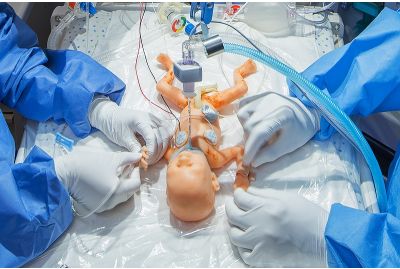 Premie HAL® S108.100 - 24-Week Preterm Newborn Skills TrainerS108.100.PKLearn MoreThe Premie HAL® S108.100 is a lifelike, 24-week preterm patient simulator designed to facilitate the training of healthcare professionals in the areas of airway management, respiratory support, and resuscitation.
Premie HAL® S108.100 - 24-Week Preterm Newborn Skills TrainerS108.100.PKLearn MoreThe Premie HAL® S108.100 is a lifelike, 24-week preterm patient simulator designed to facilitate the training of healthcare professionals in the areas of airway management, respiratory support, and resuscitation. -
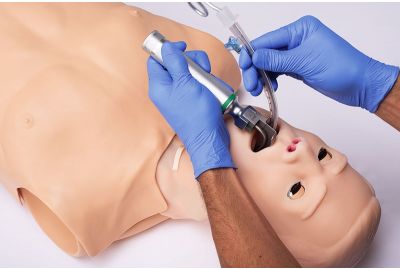 HAL® S315.100 - Adult Multipurpose Airway and CPR TrainerS315.100.M2.PKLearn MoreHAL® S315.100 is an easy-to-use and portable airway management and CPR skills trainer. HAL was designed to help you teach basic and advanced airway management as well as cardiopulmonary resuscitation. HAL helps participants learn to recognize laryngospasm and practice performing emergency tracheostomies and cricothyrotomies. HAL® is available in a full-body configuration.
HAL® S315.100 - Adult Multipurpose Airway and CPR TrainerS315.100.M2.PKLearn MoreHAL® S315.100 is an easy-to-use and portable airway management and CPR skills trainer. HAL was designed to help you teach basic and advanced airway management as well as cardiopulmonary resuscitation. HAL helps participants learn to recognize laryngospasm and practice performing emergency tracheostomies and cricothyrotomies. HAL® is available in a full-body configuration. -
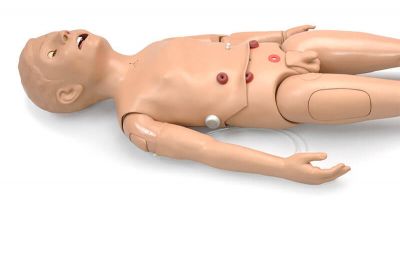 Five-Year-Old Multipurpose Patient Simulator (S157)S157.PKLearn MoreThe Five-Year-Old Multipurpose Patient Simulator is designed to help participants practice and develop pediatric nursing care and resuscitation skills, including CPR, intubation, trach care, IV access, and more.
Five-Year-Old Multipurpose Patient Simulator (S157)S157.PKLearn MoreThe Five-Year-Old Multipurpose Patient Simulator is designed to help participants practice and develop pediatric nursing care and resuscitation skills, including CPR, intubation, trach care, IV access, and more. -
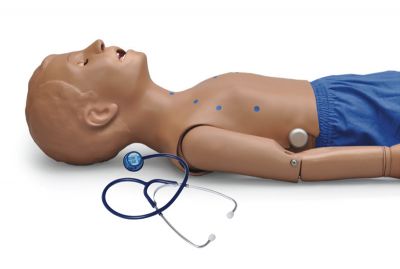 5-Year-Old Patient, Heart and Lung Sounds Skills Trainer (S314.200)S314.200.PKLearn MoreThe 5-Year-Old Patient Heart and Lung Sounds Skills Trainer is a new site-specific upgrade for your existing Gaumard® pediatric manikin. Teach site-specific heart and lung auscultation skills using seamless simulation technology. Simply press the bell against the skin and listen. Students use anatomic landmarks on the manikin to locate the site where a specific sound should be heard. If correct, they will hear the appropriate sound through the stethoscope and/or external speakers.
5-Year-Old Patient, Heart and Lung Sounds Skills Trainer (S314.200)S314.200.PKLearn MoreThe 5-Year-Old Patient Heart and Lung Sounds Skills Trainer is a new site-specific upgrade for your existing Gaumard® pediatric manikin. Teach site-specific heart and lung auscultation skills using seamless simulation technology. Simply press the bell against the skin and listen. Students use anatomic landmarks on the manikin to locate the site where a specific sound should be heard. If correct, they will hear the appropriate sound through the stethoscope and/or external speakers.
